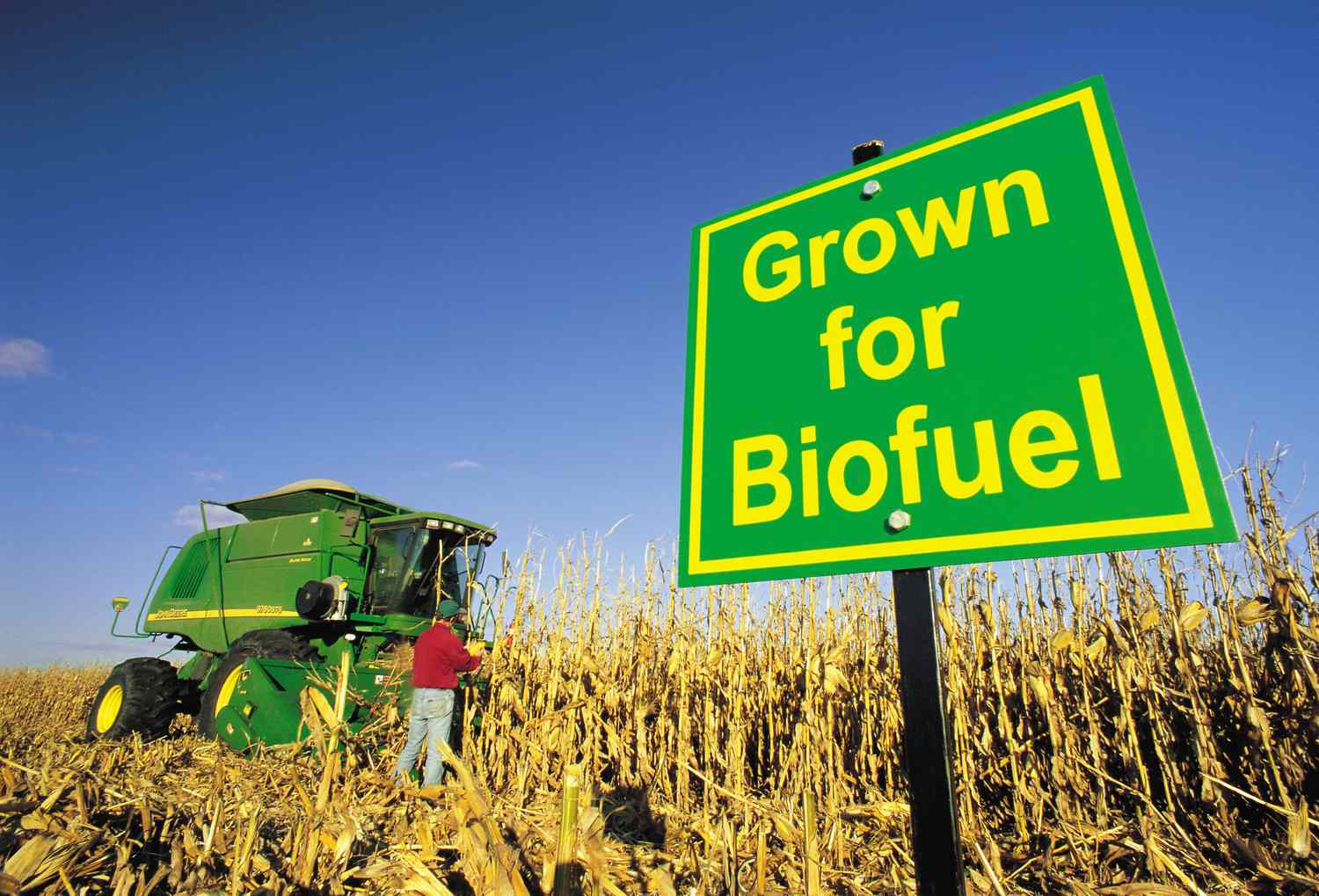In a recent development, the Biden administration has announced an expansion of biofuel integration into the U.S. fuel supply chain over the next three years. However, concerns have arisen among biofuel proponents and agricultural stakeholders due to the decision to maintain corn-based ethanol production figures. For the latest updates on alternative energy policies, please visit this page.
Overview of the EPA’s 2023 Ethanol Directive The Environmental Protection Agency (EPA) has recently unveiled its plan, which mandates biofuel blending volumes of 20.94 billion gallons in 2023, 21.54 billion gallons in 2024, and 22.33 billion gallons in 2025. Although these figures represent an increase from previous years, only 15 billion gallons are allocated for corn-based ethanol over the three-year period.
This decision has raised questions about the United States’ commitment to renewable energy sources and the potential environmental consequences of this strategy. To explore the implications of the EPA’s decisions in more detail, please follow this link.
Economic Significance of Ethanol in the United States A significant portion of gasoline sold in the U.S. contains 10% ethanol, playing a vital role in the economies of states like Iowa and Nebraska, situated in the Midwest. Ethanol production creates jobs, supports local economies, and reduces the nation’s reliance on foreign oil. However, critics argue that the environmental impact of corn production, including water usage and pesticide runoff, may counterbalance some of the benefits of using ethanol as a fuel source. To understand the strategies employed in the U.S. fuel industry to optimize outcomes, explore this link.
EPA’s 2023 Ethanol Directive and Reducing Foreign Oil Dependence EPA Chief Michael Regan emphasizes that this final rule aims to reduce daily reliance on foreign oil sources by a substantial 140,000 barrels. Furthermore, it supports the continued growth of biofuels, which emit fewer greenhouse gases compared to conventional gasoline or diesel. This aligns with global efforts to reduce carbon emissions and combat the adverse effects of climate change. To stay updated on the latest trends in the energy transition, check out this link.
The Broader Climate Perspective “Ethanol and other renewable fuels are instrumental in diversifying our nation’s energy portfolio and combating climate change. They not only foster job creation but also bring economic advantages to communities nationwide,” states Regan.
For additional insights into the challenges facing renewables, explore this page.
Industry Reactions to the EPA’s 2023 Ethanol Directive The biofuels sector has expressed dissatisfaction with the EPA’s latest figures, which represent a step down from last year’s proposal. Emily Skor, CEO of Growth Energy, a consortium in the ethanol industry, remarked that “The EPA’s revised goals for traditional biofuels don’t align with Congress’s direction. This will inadvertently hinder progress towards the administration’s climate objectives.” To stay informed about the latest trends in politics, laws, and policies, click here.
Advocating for Advanced Biofuels Michael McAdams, President of the Advanced Biofuels Association, has labeled the EPA’s strategy as a missed opportunity to champion and expand the adoption of low-carbon advanced biofuels, such as algae-derived fuels and cellulosic ethanol. These advanced biofuels have the potential to significantly reduce carbon emissions and serve as a more sustainable alternative to traditional fuels. Explore our news on factors influencing growth in alternative fuels by visiting this link.
Environmentalists’ Perspectives Environmental advocates have also voiced their concerns. Dan Lashof, U.S. director of the World Resources Institute, commented, “The future isn’t driven by corn. Converting crops into fuel exacerbates the climate crisis and is an inefficient use of prime agricultural land.” For more news on environmental perspectives regarding biofuels, check out this page.
Balancing Agriculture and Climate Goals Approximately 40% of U.S. corn production is directed toward ethanol production. Lashof considers this a significant waste and advocates for climate-smart agricultural practices that prioritize food production, carbon storage, and biodiversity conservation. As the debate continues, it is evident that a balanced approach, considering both economic and environmental factors, will be essential for the future of U.S. energy policy. To delve deeper into the topic of agriculture and climate goals, follow this link.
Key Takeaways from the EPA’s 2023 Ethanol Directive
- The Biden administration is increasing biofuel blending volumes for the next three years.
- Corn-based ethanol production figures remain unchanged, leading to concerns among biofuel and agricultural advocates.
- EPA’s plan sets biofuel blending volumes at 20.94 billion gallons in 2023, 21.54 billion gallons in 2024, and 22.33 billion gallons in 2025.
- 10% of gasoline sold in the U.S. contains ethanol, which is crucial for states like Iowa and Nebraska.
- The new rule aims to reduce daily foreign oil dependence by up to 140,000 barrels.
- Renewable fuels are considered essential for diversifying the U.S. energy mix and combating climate change.
- Industry reactions to the EPA’s decision have been mixed, with some expressing dissatisfaction.
- Environmentalists express concerns over the continued promotion of ethanol and other biofuels.
- Advanced biofuels like algae-derived fuels and cellulosic ethanol are seen as more sustainable alternatives.
- 40% of U.S. corn output is used for ethanol production, sparking debates on its efficiency and sustainability.





Hello my loved one! I want to say that this post is amazing, great written and include almost all significant infos. I would like to look extra posts like this.
Hi my loved one! I wish to say that this post is amazing, nice written and include approximately all vital infos. I’d like to peer more posts like this.
I don’t think the title of your article matches the content lol. Just kidding, mainly because I had some doubts after reading the article.
Thanks for sharing. I read many of your blog posts, cool, your blog is very good.
Thanks for sharing. I read many of your blog posts, cool, your blog is very good.
Thank you for your sharing. I am worried that I lack creative ideas. It is your article that makes me full of hope. Thank you. But, I have a question, can you help me? https://accounts.binance.com/pl/register?ref=YY80CKRN
Can you be more specific about the content of your article? After reading it, I still have some doubts. Hope you can help me.
I don’t think the title of your article matches the content lol. Just kidding, mainly because I had some doubts after reading the article.
Your point of view caught my eye and was very interesting. Thanks. I have a question for you.
Can you be more specific about the content of your article? After reading it, I still have some doubts. Hope you can help me.
Thank you, your article surprised me, there is such an excellent point of view. Thank you for sharing, I learned a lot.
Can you be more specific about the content of your article? After reading it, I still have some doubts. Hope you can help me.
Thanks for sharing. I read many of your blog posts, cool, your blog is very good.
Can you be more specific about the content of your article? After reading it, I still have some doubts. Hope you can help me.
I don’t think the title of your article matches the content lol. Just kidding, mainly because I had some doubts after reading the article.
Can you be more specific about the content of your article? After reading it, I still have some doubts. Hope you can help me.
Thanks for sharing. I read many of your blog posts, cool, your blog is very good.
I don’t think the title of your article matches the content lol. Just kidding, mainly because I had some doubts after reading the article.
Your article helped me a lot, is there any more related content? Thanks!
Thanks for sharing. I read many of your blog posts, cool, your blog is very good. https://www.binance.info/lv/register?ref=B4EPR6J0
Thanks for sharing. I read many of your blog posts, cool, your blog is very good.
Can you be more specific about the content of your article? After reading it, I still have some doubts. Hope you can help me. https://www.binance.info/bg/register?ref=V2H9AFPY
Can you be more specific about the content of your article? After reading it, I still have some doubts. Hope you can help me. binance referral
Your point of view caught my eye and was very interesting. Thanks. I have a question for you.
Thanks for sharing. I read many of your blog posts, cool, your blog is very good.
Your point of view caught my eye and was very interesting. Thanks. I have a question for you.
I don’t think the title of your article matches the content lol. Just kidding, mainly because I had some doubts after reading the article.
Thanks for sharing. I read many of your blog posts, cool, your blog is very good.